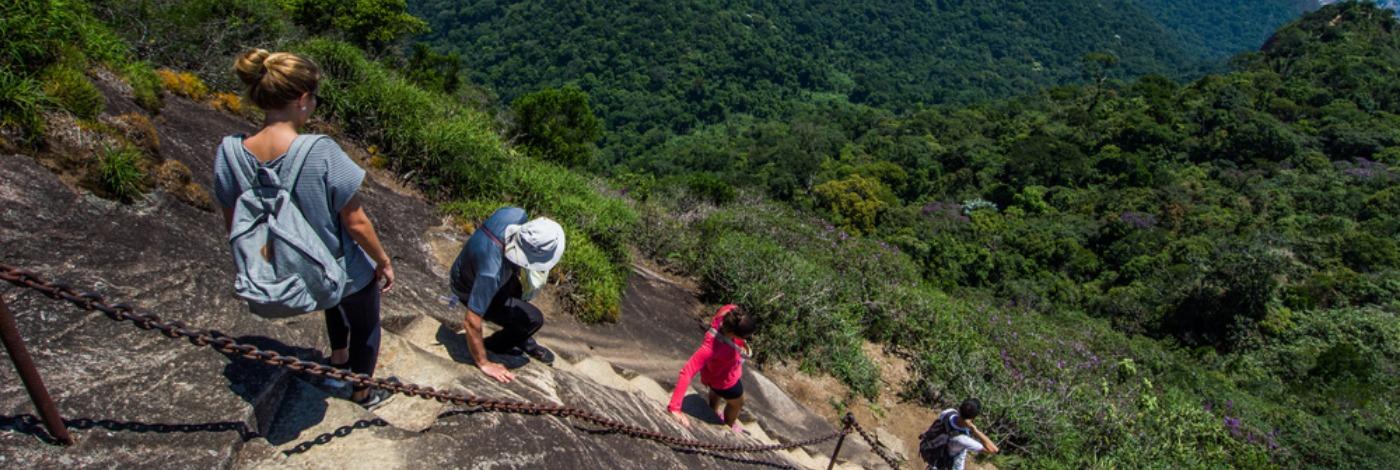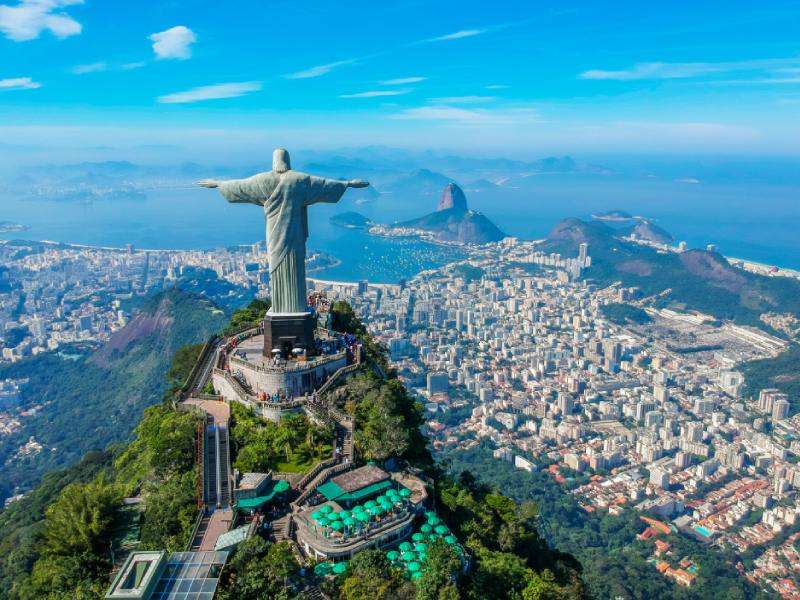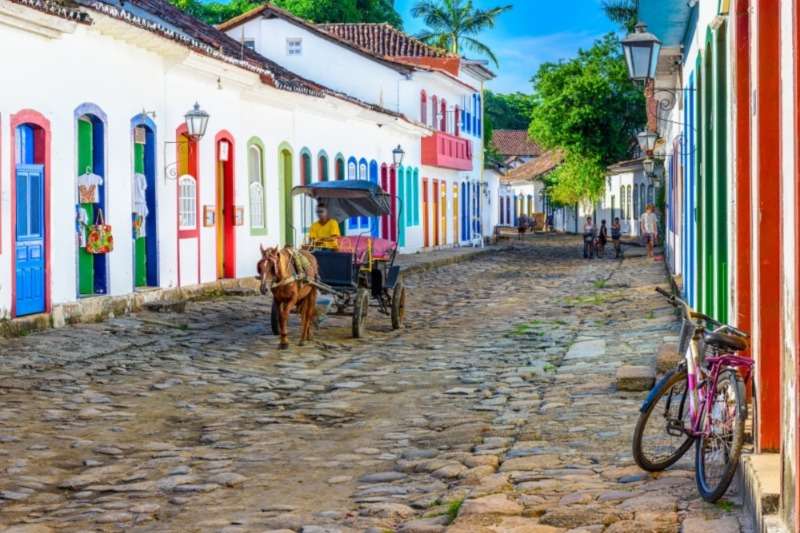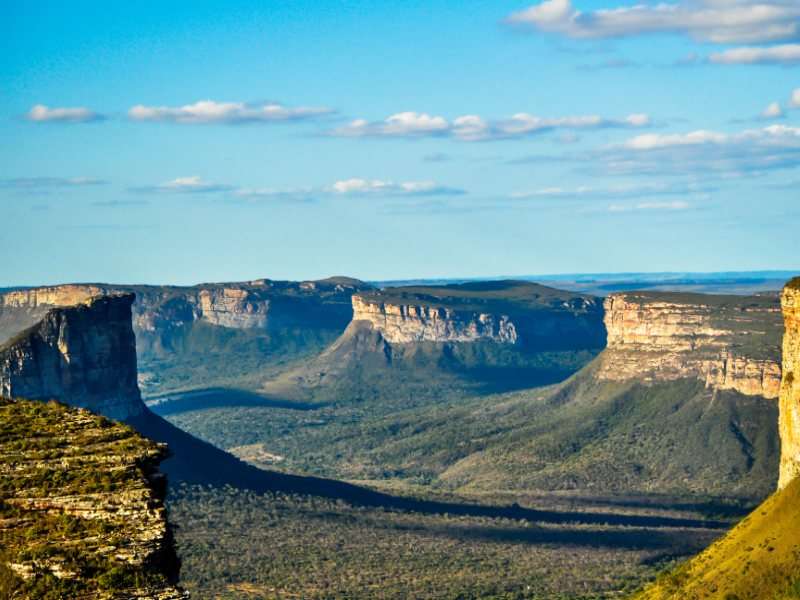
Tijuca National Park
Tijuca National Park is frequently referred to as the lungs of the city and is a lush, hand-planted forest located 20 kilometers from the center of Rio. With a surface area of more than 32 km2, it is regarded as the largest urban forest in the world. A wide range of plants and animals call the deep forest home. Tijuca National Park in Rio de Janeiro is the ideal destination if you love the outdoors. To experience enthralling natural beauty and the scent of the jungle in the middle of a metropolis is sheer delight.
In an effort to repair the harm caused by extensive coffee farming in earlier decades, Tijuca National Park was reestablished in 1800. Now, the once-dense forest is more lush than many areas of the Amazon. In the Tijuca National Forest, a wide range of insects, spiders, snakes, hummingbirds, coatis, monkeys, and armadillos could be observed.
For tourists who appreciate seeing wildlife, the location is a paradise. The area surrounds Rio de Janeiro's internationally renowned Christ the Redeemer monument and well-known Corcovado hill and makes up 7% of the city's total land area. Discover nature's bounty away from the bustle of the city by visiting Tijuca National Park.
History
Reforestation is largely responsible for the current Tijuca National Park and the forests that surround it. In the 1700s, Rio de Janeiro's surrounding forests were removed to make room for livestock, coffee plantations, and fuel. The city's water supply was largely derived from the small streams in the previous forest, but when rainfall patterns changed, the city started to endure water shortages and flash floods. Brazilian Emperor Pedro II established federal jurisdiction over the region in 1861, at which point work on reforestation of the region's once-forested slopes and abandoned fields got underway. Six people who were held as slaves planted new trees. Eleutério, Constantino, Manuel, Mateus, Leopoldo, and Maria were their names.
The Portuguese authorities used these people as slaves, and the manager of the Tijuca Forest, Major Manuel Gomes Archer, oversaw their enslavement. Between 1861 and 1887, they planted nearly 100,000 trees. A cog railway was constructed during this period to transport visitors to the summit of Corcovado, and between 1922 and 1931 the renowned monument of Christ the Redeemer was constructed.
Tijuca Forest was designated a national park in 1961[1], and the park was included in the creation of the Carioca Mosaic in 2011. The park was included in the landscapes surrounding Rio de Janeiro which UNESCO declared a world heritage site in 2012.
Emperor Pedro II founded one of the biggest urban forests in the world in 1861 to reforest the area damaged by deforestation brought on by the production of sugarcane and coffee. The Pico da Tijuca, Pico do Papagaio, and Cascatinha Taunay are just a few of the attractions in this area of Tijuca National Park. Cariocas and visitors come to this preserved section of the Atlantic Forest to go for walks, strolls, and sporting activities. The flora and wildlife of the Forest of the Tijuca are composed of birds, natural plants, and fruit-bearing trees.
Pico da Tijuca, a mountain that rises to a height of 4,010 feet and is the highest point in the park, is accessible by a trail that begins at Cascatinha Road in Alto da Boavista.
Even for those who are not accustomed to trekking, the short walk is not steep and is a pleasant stroll despite the fact that it appears tough to reach the summit of the city's highest point. Visitors can take in a panoramic view of the city from Pico da Tijuca's summit, including Baixada Fluminense, the West Zone, Downtown Rio, and the Rio-Niteroi Bridge.
The Tijuca National Park Visitor Center, which houses a year-round exhibit titled "A Park in Metropolis," is another draw to the forest. The exhibit, which focuses on the development of the region that is now the Tijuca National Park in three stages—forest, original human intervention, and ultimately park—aims to promote the thoughtful use of public spaces and resources. The exhibit, which focuses on the development of the region that is now the Tijuca National Park in three stages—forest, original human intervention, and ultimately park—aims to promote the thoughtful use of public spaces and resources.
Things to do In the Park
Skateboarding And Cycling
Skateboarding is not only a sport, but also a way of life for many people, particularly in Rio de Janeiro. Three possibilities for tracks with asphalt that are appropriate for the sport are available to participants in the park.
One of the activities you may undertake in the park is cycling. The Venice Road is among the most looked-up routes. If you're interested in this activity, find out what days and times the road can be accessed. The times may occasionally change for safety reasons, such as when it rains, for instance. It is vital to wear the proper safety gear, such as a helmet, glove, knee, and elbow pads, for both activities. Pay attention to and abide by the markings on paths and roadways. Because the road is used by both vehicles and pedestrians, respecting the signage is essential.
Climbing
As this region is home to one of the most well-known and crowded ramps in the world, Pedra Bonita, there are climbing choices with varying degrees of difficulty, trails, and even gliding (hang gliding and paragliding)! Ever stop to consider the beauty? It's important to keep in mind that because the respondents and sports are of intermediate ability, it is advised to participate in these activities in a guide's company.
Gliding
Who hasn't seen photos of people paragliding or hang gliding in Rio de Janeiro? Everyone of us has a friend who did it! And then there are some gorgeous pictures with such a breathtaking vista that we even forgot about our fears and want to participate! The location where these events take place is Pedra Bonita, according to practitioners of free flight. The hang gliding ramp is made of metal and wood. It makes sense for paragliders to use ramps. both are 517 meters tall.
Rappeling
Rappelling is one of the most intriguing things to do in Tijuca National Park. Along with activities, you may take in the natural splendor of the Atlantic Forest and the many sceneries. It is undoubtedly a distinctive experience. If you are a novice, it is advised that you complete this exercise with a knowledgeable instructor. Look for trained instructors for the activity.
Utilize all necessary safety gear when performing this activity. Put on some relaxed clothing and sneakers. Use insect repellant and sunblock. Eat healthy foods, and don't forget to drink lots of water. Be mindful of the weather.
Forest Jeep Tour in Tijuca
The largest urban forest in the world, Tijuca National Park, is situated in the mountains that encircle Rio de Janeiro. The wonders and variety of this national park are a favorite among visitors. There are many diverse plant species and several rare animal species, some of which are in danger of going extinct.
A jeep tour is among the best methods to discover the forest. These excursions often last several hours as you travel while viewing animals including birds, butterflies, sloths, and monkeys. You'll make stops to enjoy waterfalls, city vistas, and even have the chance to walk. It's a lovely way to see the forest and plunge right into the action.

Best Time to Visit
In Brazil, the period before Christmas through Carnaval is considered high season (which falls sometime in Feb or early Mar, depending on the year). During this time, flights and lodging are more expensive and more likely to be booked up. For accommodations throughout the holidays and during Carnaval, make reservations well in advance. The best time to go is now because it's warm outside, cities and resorts are busy with Brazilians taking summer vacations, and Carnaval and New Year's are incredibly exciting. The best time to travel to Brazil for New Year's is after Christmas. Since the 25th is mostly a family holiday, few restaurants and retail establishments will be open.
Easter week, the month of July, when Brazilian schools and colleges are on winter break, and the month of August, when the majority of visitors from Europe and North America are on vacation, are other busy seasons of the year. The weather can be downright chilly from Rio de Janeiro southward, and prices significantly increase, making this probably the worst time of year to travel. The only exceptions are in the north and parts of the Northeast. I endured four weeks of nonstop rain in Rio one year, and temperatures as low as 5 to 10 Celsius (the 40s to the 50s Fahrenheit range) are not unheard of in the south. Visit Brazil in September or October to take advantage of the finest offers and enjoy the pleasant weather.
In So Paulo, Iguaçu, and Rio, the springtime weather means warm days, and everywhere else it means tropical heat. In the Amazon and the Pantanal, you'll be there right before the wet season begins. You'll also get the chance to watch some of the samba school practices in Rio as they prepare ready for Carnaval (yes, they start 4 months early). After Carnaval (early to mid-Mar, depending on the dates) until May is another great time to go since you can take advantage of low-season pricing, especially in hotels, while still getting wonderful weather.
related tours

Best of Rio de Janeiro Brazil
5 Days / 4 Nights
From
$ 433

Highlights of Latin America Tour
9 Days / 8 Nights
From
$ 1944

Trip to Brazil
9 Days / 8 Nights
From
$ 2038

Salvador and Chapada Diamantina National Park
8 Days | 7 Nights
From
$ 835
